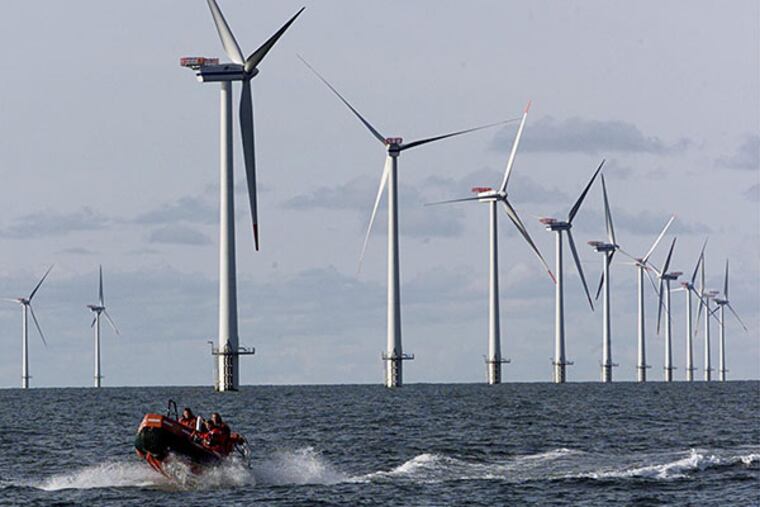Go with the wind
Scientists who tested a floating windmill off the coast of Maine a year ago have gathered enough data to build a full-size model that can be moved to take advantage of high winds.

Scientists who tested a floating windmill off the coast of Maine a year ago have gathered enough data to build a full-size model that can be moved to take advantage of high winds.
The U.S. Department of Energy is using lasers attached to buoys to measure wind speeds at differing altitudes off the coast of Virginia Beach to learn how cost-effective it would be to harness the higher winds above sea level to power wind turbines.
Meanwhile, construction of the nation's first offshore wind farm may begin this year off Rhode Island.
Amid these exciting advances in energy technology, New Jersey, once a leader, has become a laggard. The latest disappointment was the state Board of Public Utilities' refusal to approve five windmills off Atlantic City just before ground was broken for the project late last year to take advantage of tax breaks.
The BPU cited the cost to consumers, but the project's developer, Fishermen's Energy, said it would cost ratepayers only about $1 a year. That's a small price considering the potential benefits, including creation of a manufacturing hub for energy jobs. Certainly it would be good to add another player to boost Atlantic City's economy given the declining casino industry.
Relying more on wind for power decreases the impact of greenhouse gases emitted from dirty energy sources such as coal, which are causing global warming and raising sea levels. Also, consider the money saved by reducing air-pollution-related respiratory ailments, which shorten lives and produce high medical bills.
Some environmentalists continue to argue that turbine blades kill migratory birds and change their travel patterns, and that the installation of windmills could endanger sea life. But New Jersey addressed those issues in a report released in 2010 after two years of research, which concluded there would be only a marginal impact on birds and animals. The study laid out where birds and sea animals live, feed, and travel so windmill developers can avoid them.
The state's continuing antagonism toward offshore wind power denies the industry the practical experience it needs to continue to develop. With 127 miles of Atlantic coastline, New Jersey is in a unique position to be a leader in this fledgling industry, which is why the federal government awarded the Fishermen's Energy project $47 million in funding last year.
Four years ago, Gov. Christie saw the promise in wind power and signed legislation encouraging the industry. He should remember that now as his BPU and Fishermen's Energy prepare to do battle over the denied permit in court in March. Why not avoid that drama and let the wind farm construction proceed? New Jersey doesn't need a Luddite BPU that can't see that the time for wind power in this state is now.